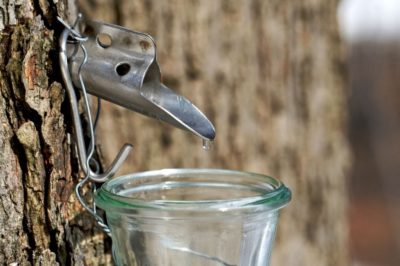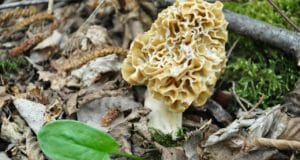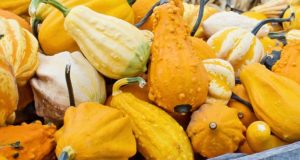 Making homemade maple syrup is not as difficult as Mrs. Butterworth would have you believe.
Making homemade maple syrup is not as difficult as Mrs. Butterworth would have you believe.
If you have a maple tree or two, and a little time, you can make your own, said John Barnhart, a tree tapper of four years.
As Oregon Park District’s natural resource manager, he introduced the concept to his community.
“In the beginning, I would knock on doors and ask people if I could go in their backyard to tap their trees. No one ever said no, it was awesome. It’s really taken on a life of its own. Now they are calling me, inviting me out to tap their trees.”
This growing community project can begin anywhere, he said. Building a bond with neighbors through an old world craft is a good way to get people outdoors, and sharing the workload helps, too, he said.
Learning about the process and nature, as well as getting to know one another is simply a sweet perk.
“There is nothing like that in-person communication, the eye contact and being outside. I think we can lose touch in our society, but can bring them back with something simple like this. Just invite everyone over and have a big pancake breakfast with the syrup you all made. It gets you out of the house and away from the TV set. You’d be surprised what you have in common with your neighbor.”
The end of the season celebration comes when the trees stop producing sap as the temperature warms up. He blends and bottles the syrup, giving a bottle to each who lent a tree. The rest is donated for pancakes at the local area Kiwanis’ annual breakfast.
“Homeowners get a half pint bottle, and they are tickled to death,” he said.
This year Barnhart has tapped 105 trees all over his town. He educates school-aged children through each step of the process, inviting them on a field trip in their own community.
A grand encyclopedia of country lore…
Typically he works through most of February and into March, collecting and cooking sap. This year, due to extremely cold temperatures, the season is running a little later than usual. He has an outdoor garden shed where the public often stops by and watches.
Indoor cooking is possible but not conducive because the steam dries with a sticky residue.
Story continues below video
Knowing the basics:
There are plenty of instructional books in stores and local libraries, as well as many how-to videos on YouTube, Barnhart said. While those resources helped him to refine his syrup, personally, he likes to take it back — way back, to the Civil War days.
Tapping can take place when nighttime temperatures are below freezing. During the day it should be between 40 and 45 degrees Fahrenheit for sap to flow properly.
Locate maple trees in the area; sugar maples are best, he said, followed by black, red, silver, yellow Norway maple varieties. Because novices may not know what a maple looks like after a long winter, a local arborist can assist.
Trees must be mature, 30 years old at least, which can be determined by their size. Those 18 to 24 inches wide or larger are perfect. For every four inches larger, an additional pail can be added, though not exceeding four, as each adds stress to the tree.
During the afternoon, using a hand drill, with a 7/16th auger bit, on a slightly upward angle, go in about 2 1/2 inches on the south/southwest side of tree, where the sun has started to warm the bark. A good working height is about waist-high.
Gently tap a stile (spout) with a hammer into the drilled hole. The stile should have a hook attached to hang a pail. Barnhart uses three-gallon metal lidded pails.
Dumping the pails every night into a collection bin is recommended. He uses a 120-gallon bulk poly tank in the back of his pickup truck. It is a good general purpose tank with a valve that can be purchased at any farm goods store.
An average tree will produce 15 gallons of sap, though that varies across the board. Sometimes a pail may be overflowing one day and the next only be half full. Fluctuation of temperature seems to determine that, he said.
Evaporating the water off the sap is what turns it into syrup. The pan is exposed to the open flame of a wood-burning stove he has in a garden shed.
Story continues below video
Using a stainless steel flat pan system with three compartments allows more surface area to be exposed to the flame, making it boil better. A deep caldron isn’t as efficient. Some of the newest evaporation pans are corrugated, and some have a honeycomb system to distribute heat.
The goal is roughly 67 percent sugar content. Too much water in the sap can cause mold to develop in the syrup.
A hydrometer, which costs about $12, can be found online or in cooking stores. It measures the density of the syrup and its sugar content.
The flat pan he uses holds 60 gallons and takes about 12 hours to cook down.
“Stirring just gives ya something to do. You don’t have to,” he said.
For an operation as large as Barnhart’s, he requires a second bulk tank which has a hose attached that runs over to a float box. It regulates the level of syrup, maintains about four inches in the bottom of the pan, any fuller and it doesn’t boil as well.
Once he pulls it off of the fire, he blends and bottles at 108 degrees. Early season sap is lighter in color and a little sweeter. Late season sap has a back woodsy, hearty, robust taste, so he blends them to make a more consistent flavor.
“Depending on where your information comes from, each has a slightly different twist. There are variances, just the same as everyone’s grandmother has a certain way of making stew. It’s a little different but basically the same,” he explained.
It takes 40 to 60 gallons of sap to make one gallon of syrup.
Trees on average have a ratio of 40 to 1 or as high as 60 to 1, which again is determined by the age of the tree, the rainfall levels and other weather conditions. Trees that are in wooded areas and not in tidy yards have more output, which he believes is due to the spent leaves adding nutrients to the soil around the base of the trees.
During a previous drought, trees didn’t give as much sap, but because there was less water to evaporate it was a 20 to 1 best case scenario ratio.
At the end of the season, when it is no longer below freezing at night, sap turns buddy tasting and all the sugars are gone.
Barnhart purchases most of his supplies from Sugar Bush in Michigan. For more information about products for syrup making, go to www.sugarbushsupplies.com.
Sign up for Off The Grid News’ weekly email and stay informed about the issues important to you
 Off The Grid News Better Ideas For Off The Grid Living
Off The Grid News Better Ideas For Off The Grid Living




